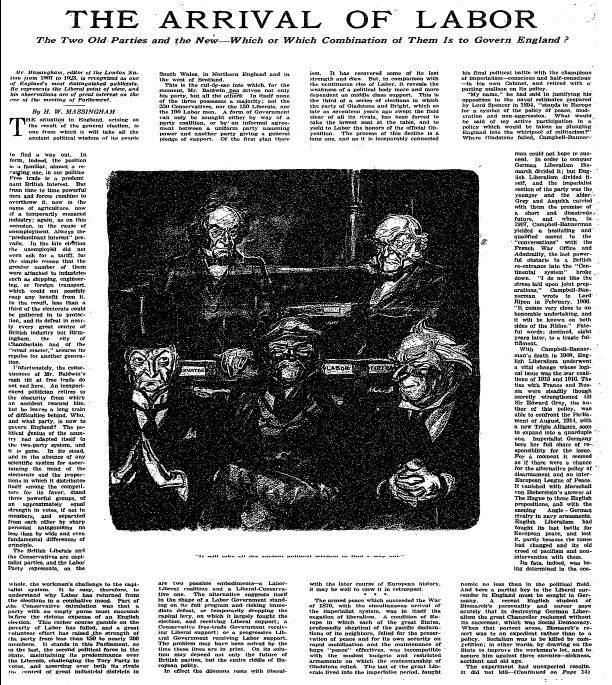The Arrival of Labour
100 years ago this month, Ramsay MacDonald became the U.K.'s first Labour Party Prime Minister. In a 1924 New York Times Magazine article, former London Nation editor H.W. Massingham explained the development to his American counterparts.
In the prior month's December 1923 election, the Conservative Party actually earned the most seats in Parliament but short of an outright majority. Labour came in second, while the Liberal Party came in third.
Leading up to this moment, the Conservative and Liberal parties had traded control for decades. Indeed, the last time another party led was the Whigs from 1855-58. But in January 1924, the Liberals formed a coalition with Labour to elevate Labour into leadership for the first time.
In the weeks before that decision was finalized, Massingham explained:
Who, and what party, is now to govern England? The political genius of the country had adapted itself to the two-party system, and it is gone. In its stead, and in the absence of any scientific system for ascertaining the mind of the electorate and the proportions in which it distributes itself among the competitors for its favor, stand three powerful groups, of an approximately equal strength in votes, if not in members.
[The parties are] separated from each other by sharp personal antagonisms no less than by wide and even fundamental differences of principal. The British Liberals and the Conservatives are capitalist parties, and the Labor Party represents, on the whole, the workmen's challenge to the capitalist system.
In the entire century since, only the Conservative or Labour Party has ever held power.
While Labour hasn't actually held power since losing it in the 2010 election, they've remained in second place that whole time behind only the Conservative Party (Tories). In the most recent 2019 election, Labour finished as runner-up with 32% of the popular vote and 31% of seats in Parliament.
No other party even came close. Liberal Democrats, the much-beleaguered successor to the 1924-era Liberal Party, won 11% of the popular vote and just under 2% of the seats. Meanwhile, the Scottish National Party won 4% of the popular vote and 7% of the seats.
Labour's 13-year-long losing streak may soon end. The next election will likely occur during the second half of 2024, and by law can't be held later than January 2025. While anything could happen between now and then, current polling projects Labour will once regain control.
The Liberal Democrats, though, will not. That ship sailed starting in 1924.
The Arrival of Labour
Published: Sunday, January 6, 1924


